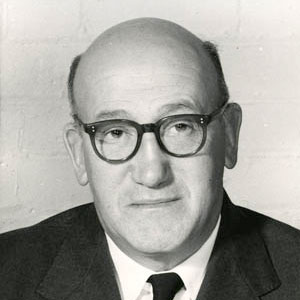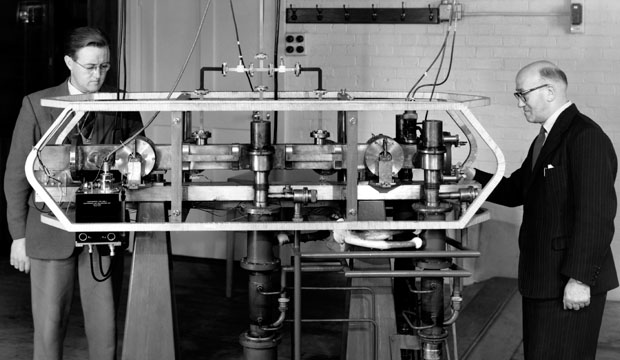Louis Essen built the world's first working caesium clock and paved the way for a new and better definition of the second.

Louis Essen built the world's first working caesium clock and paved the way for a more accurate definition of the second.
Louis Essen re-measured the velocity of light and challenged aspects of Einstein's special theory of relativity. But it was his research into the physics of frequency generation and measurement which changed the way the world now measures time. From the 1930s, when he worked on the world's first quartz oscillator-based clocks, to the 1960s, when international time switched from astronomical measurement to a "standard second" - based on his version of the atomic (caesium) clock, Essen was among the world leaders in physics.
Essen was invited to join the National Physical Laboratory shortly after graduation from university to work with D W Dye on 'tuning fork' clocks, and the possibility of using quartz oscillators to measure time. With Dye's death in 1933 Essen focused on the use of quartz oscillators and eventually designed the quartz ring clock.
During the war he helped to design vital technology, curing the problems of high frequency communication systems and designing special cables for use at microwave frequencies, as required for short wave radar. In 1946 he managed to record the speed of light as 299 792 kilometres per second (16 km/sec greater than the value accepted at the time). In 1950, using an improved resonator, he derived a value of 299 792.5 km/sec - within two metres per second of the laser-based figure adopted in 1975.

In the early 1950s Essen visited American laboratories including the US National Laboratory of Standards where caesium clocks had been constructed. On his return to NPL, he worked alongside J.V.L Parry to design and operate a novel caesium clock of a much greater stability and accuracy. With it he brought out a paper that proved the accuracy of his instrument to within one part in ten thousand. By the time this had been published Essen had improved the clock to an accuracy of one part in a million, million, launching the world into an era of practical atomic clocks.
In 1967, the definition of the second was changed to its current form based on a particular transition in caesium atoms. Previously, the definitely of the second was based on the rotation of the Earth, so its duration was difficult to determine accurately and varied unpredictably with time.
He retired in 1972 after being quietly warned not to continue his contradiction of Einstein's law of relativity.